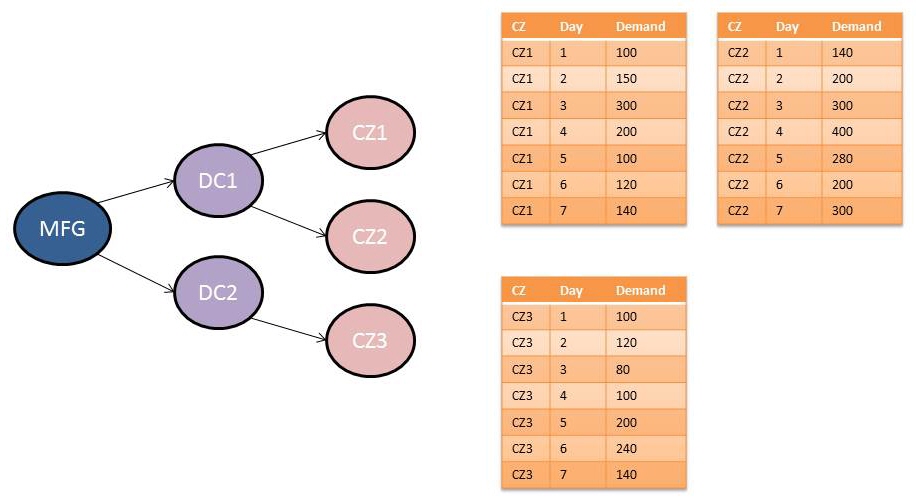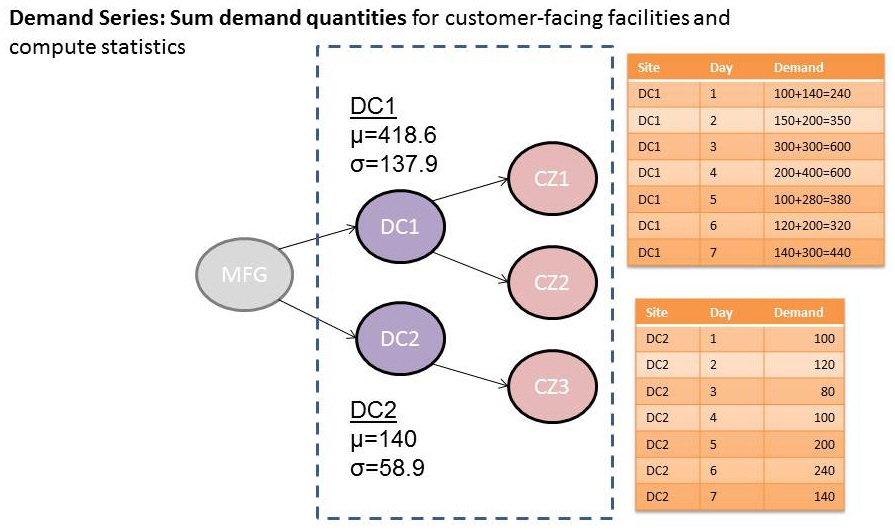Demand propagation example
Assume you have a network with one manufacturer, two distribution centers, and three customers. Each customer's demand for a single product is provided:

When you use "Demand Series" as the propagation method, the demand for customers CZ1 and CZ2 is summed, and then the mean and standard deviation is computed for DC1:

Again, the example shows the propagation at the MFG in a model where the policy at the DCs is Basestock. In this case, there is no batching:

For other policies, while the mean is the same, the other statistics at the MFG use a series of numerical procedures in their computation.
When you use "Formula" as the propagation method, the mean and standard deviation for the demand of each customer (CZ1 and CZ2) is computed. The means are summed for DC1, and then the standard deviation is computed. The following example shows the propagation at the MFG in a model where the policy at the DCs is Basestock. In this case, there is no batching:

For other policies, while the mean is the same, the other statistics at the MFG use a series of numerical procedures in their computation.
Last modified: Wednesday May 15, 2024
